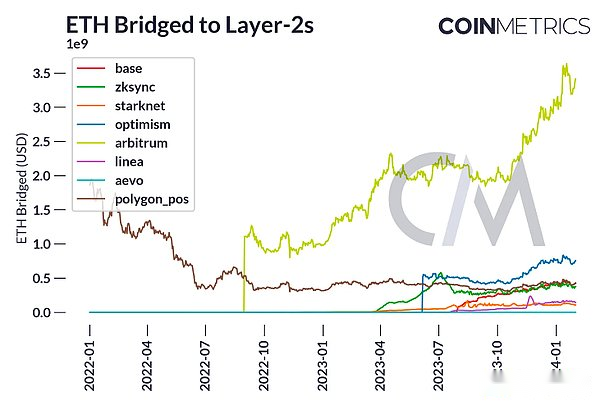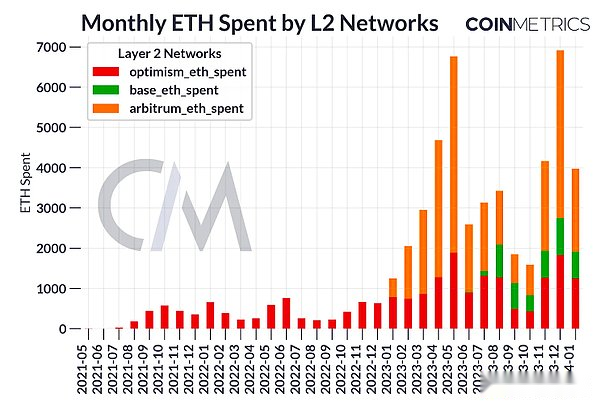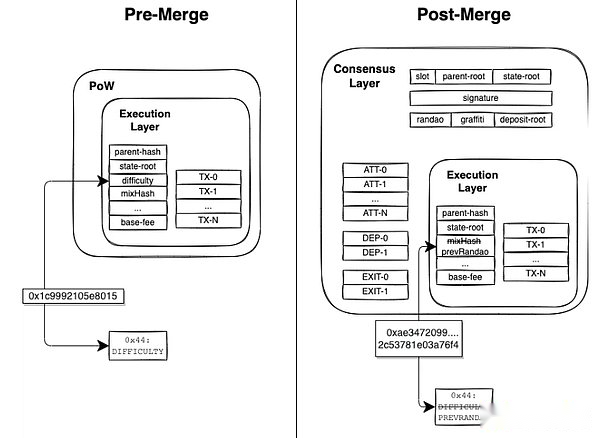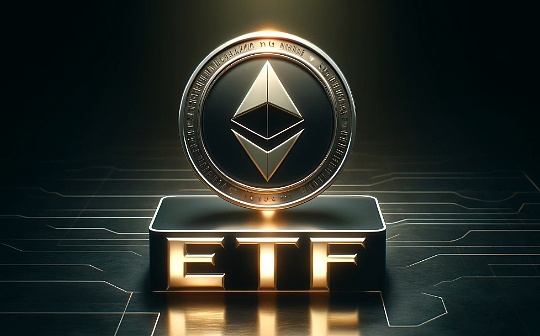
Author: Matías Andrade CabieSes, Coinmetrics; Translation: 0xjs@作 作 作 作 作 作
With the highly anticipated Dencun upgrade, we are in the cusp of the major evolution of the Ethereum blockchain ecosystem.The update marks a lot of progress. It enhances the functions of Ethereum by solving some of the most urgent challenges in the ecosystem (such as unlocking the second layer of scalability and enhancing the security of node operators and verifications).

Source: Coin Metrics Laboratory
In this article, we discussed the details of Dencun’s upgrade.We will explore the nature of upgrades, proposed modifications of Ethereum execution and consensus chain, and some indicators that can help us monitor the progress of this upgrade.
What is Dencun?
Dencun is the nickname of the latest Ethereum upgrade. Its name comes from the unique fusion of celestial body and geographical location——This is the practice that Ethereum follows when updated.It combines the first -level star DENEB of the Swan seat that is upgraded by the consensus layer and the venue of the symbolic execution layer.
Prior to the launch of the Ethereum main network, the Dencun upgrade must be carefully tested on various Ethereum test webs.This critical stage can ensure that all new functions work properly and solve any potential problems in advance.As of now, Dencun has successfully activated on the Goerli and Sepolia test network and plans to activate on the remaining test network HolešKy.The deployment of these test networks is essential for comprehensive testing all different clients, especially for developers who want to check the influence of L2 related to the expiration of BLOB.
The expectations of the upgrade around Dencun are obvious, but the exact date released by its main network has not been disclosed.After a wide test of the 1-2 months of the test network, it is expected that the Dencun upgrade will transition to the main network around March or April.This meticulous approach highlights that Ethereum is committed to ensuring stability and reliability, and aims to achieve seamless and efficient integration of Dencun’s main network.
Big story: BLOB transaction and EIP-4844
One of the key elements of Dencun is EIP-4844, which introduces “BLOB carrying transactions”.These transactions are designed to enhance data availability expansion in Ethereum.They provide a mechanism for applications on the chain. By turning demand to L2 to reduce the pressure of L1 cost, L2 gets more economical big data BLOB transaction format support.Although these blobs cannot be directly accessible by EVM, they are anchored by the promise that can be directly accessible.This format aims to be compatible with the expected complete shard model, providing temporary relief for users who are currently undergoing high L1 costs.

Source: Coin Metrics Labs
The proposed EIP lists specific parameters, encryption technology, and improved GAS accounting methods tailored for BLOB transactions.It further describes the basis of execution layer and consensus layer verification, network impact, and the foundation of BLOB transactions.The EIP is the Ethereum expansion strategy and its cornerstone of the development of the sharding, which provides a temporary solution to limit the number of these transactions to the upper limit, which is consistent with the upper limit of about 0.375 MB of about 0.375 MB per block.
The DENEB upgrade may reduce the cost of Ethereum in the short term, because the EIP-4844 will reduce the cost of the block space ROLLUP by more than ten times.The success of this upgrade can be measured by several indicators, including:
-
L2 adopts blob transaction type
-
Reduce the cost of L2 sorter cost
-
Reduce trading costs in L2
-
Increase the BLOB cost, so that “spam” data is no longer economically feasible
-
Compared with competition alternatives such as Celestia, Ethereum is used as data availability (DA) for a long time
Affects the upgrade of verifications and pledge operators
The expansion of services such as LIDO and Rocketpool, as well as pledge, as the main participants such as Coinbase, Binance, and Kraken, have been considered one of the most important areas of active research in the Ethereum community to improve the security of the network.Some of these solutions (such as increasing loss restrictions) will only reduce the rate of new authenticists to join the network.
EIP-4788: The benchmark block roots in EVM
EIP-4788 recommends embedded with the hash root of each letter chain block into the valid load head of the corresponding execution of Ethereum.This involves storing these roots in smart contracts, which allows access to the consensus layer in the Ethereum virtual machine (EVM) in a trusted way.This information realizes automation and trust by direct access to consensus layer data, so that suppliers of liquidity pledged derivatives (LSD) can reduce the operating scope of their issuing tokens and rewards (on the use of trusted chains predictionThe price of the machine is updated to the REBASING token of ETH price).

Source: Ethereum Foundation
EIP-7514: Add maximum EPOCH loss limit
With the increase of ETH pledge levels, the pressure of the consensus layer is even greater.The increase in the number of authenticants has led to an increase in GOSSIP messages and an increase in the size of the Beacon state -our archive Lighthouse node accounts for more than 16TB!Although the amount and growth rate of the Beacon status can be reduced by increasing the maximum effective balance (currently 32 ETH) (in fact, some people are exploring the EIP that will be used for this purpose), the introduction of such changes requires a subtle balanced behavior.EssenceIt needs to ensure that the network is still available for various verifications, while optimizing scalability and efficiency.

Source: Coin Metrics Network Data Pro
EIP-7044: Permanent and effective signature voluntarily exit
The introduction of permanent and effective signatures makes the pledge operation design easier, which enhances the security of user experience and pledge operators.
EIP-7045: Increase the maximum certificate containing the ATTESTATION Inclusion Slot
EIP-7045 recommends to increase the maximum proof of the Ethereum blockchain containing Slot.This change will expand the slot from Attestation.slot + Slots_per_epoch to the last slot of N + 1 EPOCH, where N is the EPOCH containing the solid.This proposal is a vital change for the security of LMD-GHOST, which can achieve faster block confirmation, and adopts new rapid confirmation rules, which will not have negative security effects.
EVM upgrade
Ethereum virtual machine (EVM) is the core of Ethereum applications.Its language and functions allow developers to create safe and efficient contracts, but like any language, it also needs to continue to develop with the identification and treatment of pain points.The following upgrades will help simplify applications running on EVM, reduce costs, and enhance developers and user experience in Ethereum networks.
EIP-1153 transient storage operation code and EIP-5656 Mcopy instructionThe introduction of technological progress is expected to optimize the interaction of smart contracts and reduce the cost of GAS related to complex operations.at the same time,EIP-6780 to SelfDestructThe modification of the operating code reflects the thoughtful response to the continuous development of the blockchain architecture, solves the problem of state changes and is consistent with future architecture changes such as Verkle Tree.
EIP-7516 adds a new operating code (blobbasefee)It is used to access the basic costs of BLOB, and promotes the cost of L1 to the Rollup users without trust on the chain price.In addition, it also allows derivatives such as BLOB expenses to create futures, options and swaps.
in conclusion
DENCUN upgrades represent the huge transformation of Ethereum development and solve the problems of current and long -term scalability, security and efficiency.
As the activation of the test network shows the gratifying results, the Ethereum community’s launch of the main network is full of expectations.
The proposed EIP, especially those EIPs designed to optimize the availability and pledge operation, will significantly enhance the performance and user experience of the network.
With the continuous development of the Ethereum pattern, it is essential to maintain knowledge and adapt to these changes from verificationrs to end users’ interests.








